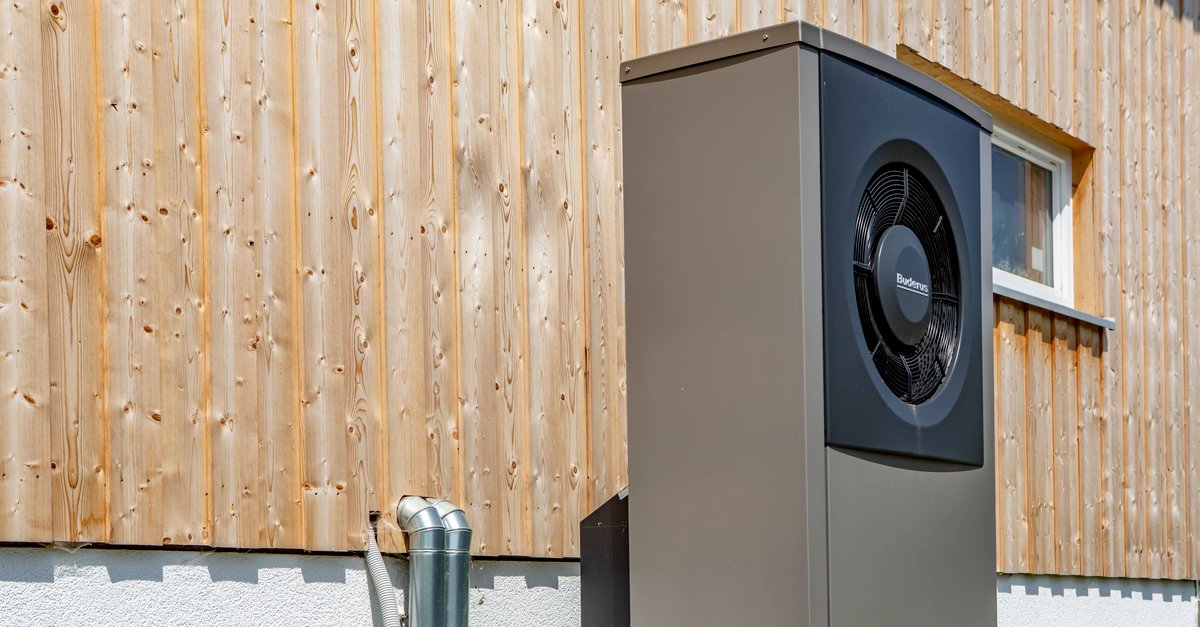Determine realistic annual performance factor for heat pump – that’s how it works
Do you want to know how efficiently your heat pump works and determine a realistic annual performance factor? We’ll show you how the calculation works.
Heat pumps are considered a particularly efficient way to keep your own four walls at a comfortable temperature. How well this actually works in the end depends on many factors. But how can a realistic annual performance factor be determined for a heat pump? You can get the answer here.
Do you want to buy a heat pump, but don’t know if it’s worth it? Then the following video is just right for you:
This is behind the annual performance factor of a heat pump
The so-called annual work figure (JAZ) is a key figure that describes how efficiently a heat pump works. As a result, you can determine how high the expected energy costs are depending on the respective heating requirement under real conditions. Since the efficiency of the heating system sometimes also depends on the condition of the building and the individual heating behavior of the user, a realistic specification of the annual performance factor is only possible after the heat pump has been commissioned. If you have a few details for a planned installation at hand, you can also determine a rough guide value for the key figure in advance.
This is how the annual performance factor of a heat pump is determined
Basically, the annual performance factor only compares the thermal energy generated within a whole year with the electrical energy supplied in the same period. Depending on the model and application scenario, modern heat pumps should have a JAZ between 3 and 5 to reach. The formula for calculating the key figure is as follows:
JAZ = heating energy : electricity consumption (each in kWh per year)
In order to determine the heating energy, a heat meter is required, which records the amount of heat given off to the heating water. The electricity consumption, on the other hand, is to be recorded using an electricity meter that only measures the energy consumption of the heat pump.
Calculation example: A heat pump that requires 2,500 kWh of electricity to generate 10,000 kWh of heating energy within a year has an annual performance factor of 4. It therefore generates four times the amount of heat from each kWh of electrical energy.
For all those who want to know more about it, it is worth taking a look at the JAZ calculatorwhich the Federal Heat Pump Association eV made available on its website has. There you can not only include specific parameters of your heating system in the calculation, but also a specific heat pump model from a manufacturer you have chosen.
Annual performance factor of a heat pump in an old building
In a realistic scenario, the efficiency of a heat pump is subject to many influencing factors, which consequently also affect the respective annual performance factor. This includes, for example, the flow temperature of the heating system, the type of heat pump, the condition of the building insulation, the outside temperature and the individual heating behavior of the users.
The flow temperature and the building insulation in particular pose particular challenges when using a heat pump in an old building, since efficient operation often requires a high annual performance factor costly repair work required are. To find out whether installing a heat pump is worthwhile for you, the Federal Ministry for Economic Affairs and Climate Protection offers an aptitude analysis on its website at.
Don’t want to miss any more news about technology, games and pop culture? No current tests and guides? Then follow us Facebook or Twitter.



